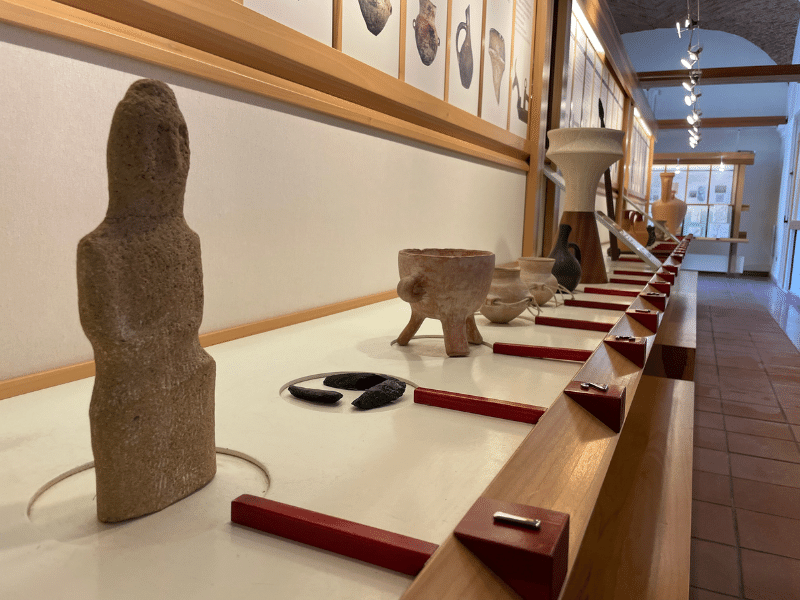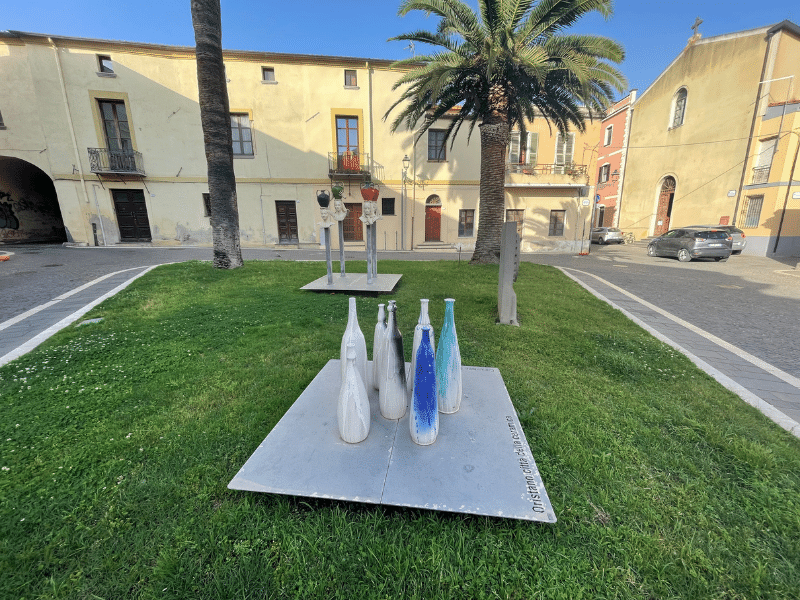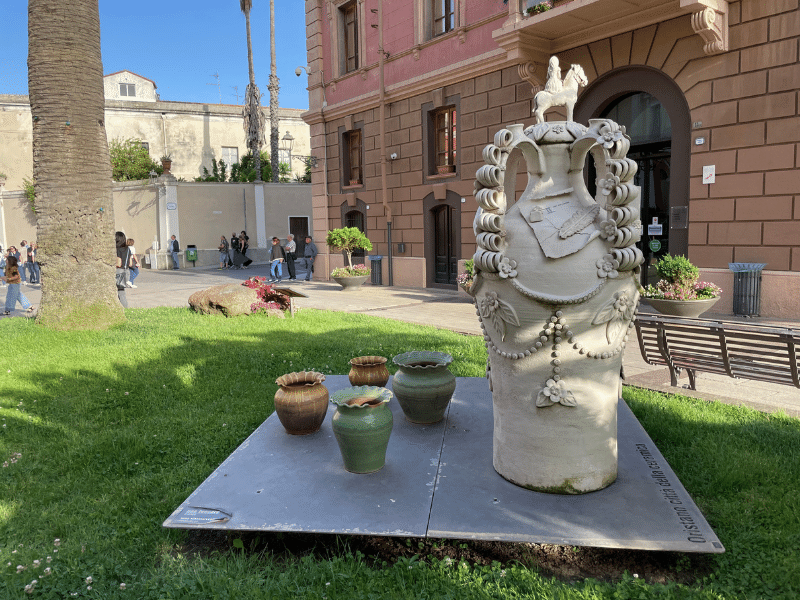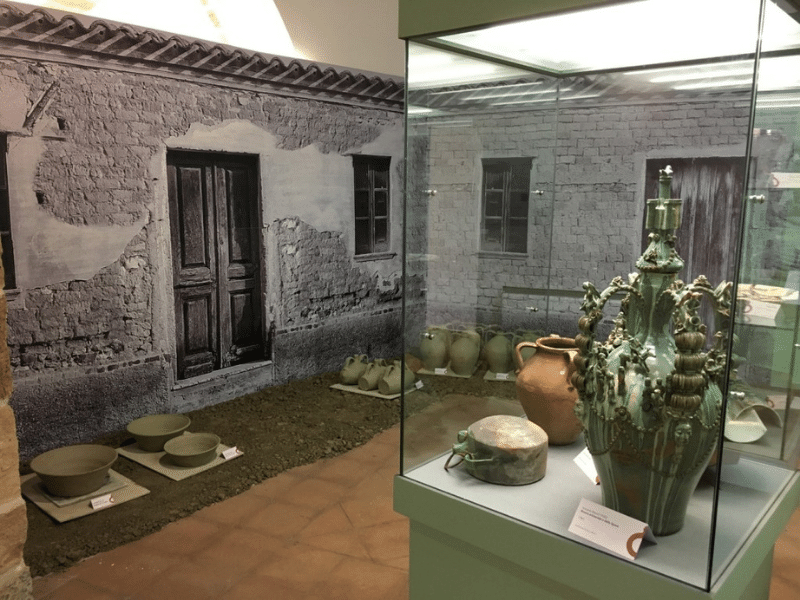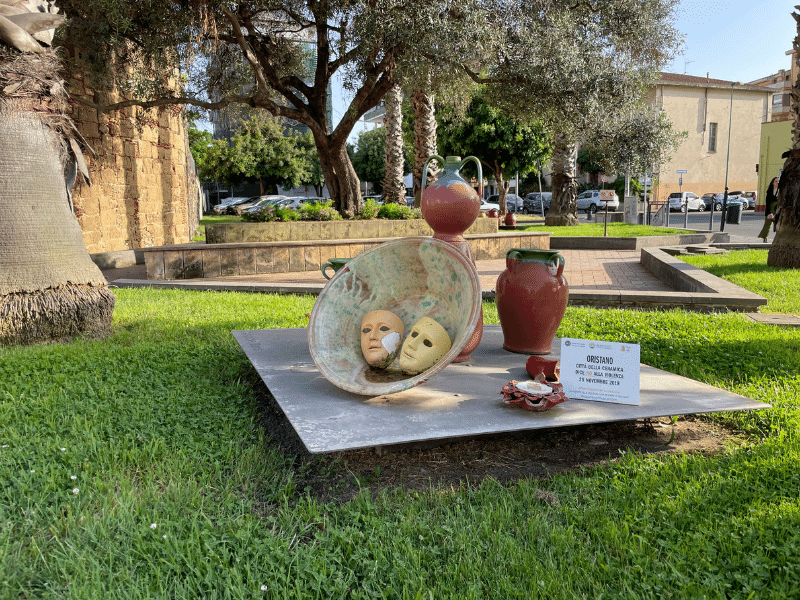Oristano is known as the City of Ceramics (ministerial acknowledgment) for the leading role that the city’s ceramics production has played over the centuries.
Thanks to its favorable environmental conditions, an alluvial plain rich in raw materials such as water, clays, and to the Mediterranean scrub used as fuel for ovens, this is a city in which the ancient craft of working ceramics arrive to us from a past long gone, with extremely valuable artisan productions.
Evidence of ceramic production in the area is known from the most ancient times (4th millennium BC), while the earliest written documents about it date back to the Middle Ages. In 1692, the statute of the gremio (corporation) of the Figoli was drawn up, which regulated the activity and protected the typical shapes of all objects produced.
The city’s old town, with its district dedicated to the Figoli and the testimony su brugu de sos conjolargios dating back to the sixteenth century, is the location where you may admire plenty of evidence of the history of Oristano ceramics, together with the productions of today’s ceramic artisans.
Apart from the locations described in this article, your visit may continue by booking at these potters’ workshops.
- C.M.A. Ceramiche Maestri d’Arte (via Cagliari, 139 – tel. 0783 358103)
- Caterina Porcu – Luce Buio (via Monte Gonare, 34 – 340 8937431)
- Margherita Giovanna Pilloni (via F. Crispi, 29 – 0783 303980)
- Valentina Pisu (Via Othoca, 30 – Via Vittorio Veneto, 55/B – 328 9475516), currently in refurbishing
- Ceramiche Manis SNC (Via Neapolis, 15 – 0783 73231)

